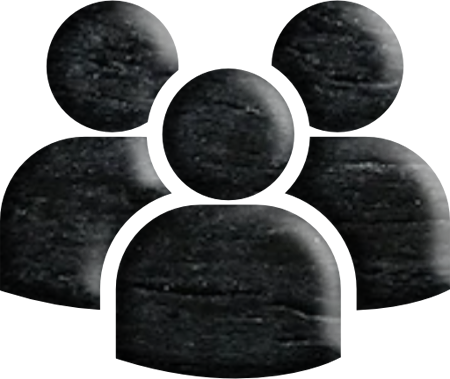The luxury handbag market represents a segment of the fashion industry that caters to affluent consumers seeking high-quality, prestigious accessories. Luxury handbags are valued for their craftsmanship, materials, brand heritage, and status symbol appeal. The market encompasses a wide range of brands, styles, and price points, from iconic heritage houses to emerging designer labels. With a global presence and a strong influence on fashion trends and consumer preferences, the luxury handbag market continues to thrive despite economic fluctuations and shifts in consumer behavior.
The luxury handbag market is experiencing robust growth driven by factors such as increasing disposable incomes, growing brand consciousness, and evolving consumer preferences for premium and high-quality fashion accessories. One notable trend in the luxury handbag market is the growing demand for timeless and iconic designs. Consumers are gravitating towards classic styles and heritage brands known for their craftsmanship, heritage, and status symbol. Iconic handbags such as the Chanel Classic Flap, Hermès Birkin, and Louis Vuitton Speedy continue to be highly coveted by fashion enthusiasts and collectors, driving sales and brand loyalty.
Download a sample copy of Report:https://www.marketdigits.com/request/sample/1726
Key Points:
-
Brand Heritage and Prestige: Luxury handbags are associated with renowned fashion houses and luxury brands that have built reputations for excellence, craftsmanship, and heritage. Iconic brands such as Louis Vuitton, Chanel, Hermès, Gucci, and Prada command prestige and exclusivity, attracting discerning consumers who value quality, tradition, and status. Brand heritage plays a significant role in shaping consumer perceptions and willingness to invest in luxury handbag purchases.
-
Craftsmanship and Materials: Craftsmanship and materials are defining features of luxury handbags, with emphasis placed on fine leatherwork, meticulous stitching, and attention to detail. Luxury brands source premium materials such as calf leather, exotic skins (e.g., alligator, python), and rare textiles to create unique and luxurious handbag designs. Artisanal techniques, traditional craftsmanship, and limited production runs contribute to the exceptional quality and exclusivity of luxury handbags.
-
Iconic Designs and Signature Styles: Luxury handbag brands often produce signature styles and iconic designs that become timeless classics and status symbols. Iconic handbags such as the Chanel 2.55, Hermès Birkin, Louis Vuitton Speedy, and Gucci Dionysus have achieved cult status and enduring popularity among fashion enthusiasts and collectors. These iconic designs reflect the brand's aesthetic vision, heritage, and craftsmanship excellence.
-
Market Segmentation and Diversification: The luxury handbag market is segmented based on factors such as price range, target demographic, and product positioning. Brands offer a diverse range of handbag styles, including tote bags, shoulder bags, crossbody bags, clutch bags, and backpacks, to cater to different consumer preferences and lifestyle needs. Luxury handbags may vary in size, shape, functionality, and embellishments to appeal to a broad spectrum of customers.
-
Influence of Celebrity Endorsement and Social Media: Celebrity endorsements, influencer marketing, and social media platforms play a significant role in shaping consumer perceptions and driving demand for luxury handbags. Celebrities and influencers often showcase designer handbags in their social media posts, red carpet appearances, and public outings, leading to increased visibility and desirability of specific styles and brands among fashion-conscious consumers.
Key Trends:
-
Sustainability and Ethical Sourcing: Luxury handbag brands are increasingly adopting sustainable and ethical practices in response to consumer demand for transparency and environmental responsibility. Brands invest in sustainable materials, eco-friendly production processes, and ethical sourcing practices to reduce their environmental footprint and promote social responsibility throughout the supply chain.
-
Customization and Personalization: Personalization and customization options are becoming increasingly popular in the luxury handbag market, allowing consumers to create bespoke designs tailored to their individual preferences and style preferences. Brands offer customization services such as monogramming, color selection, and embellishment options, providing customers with unique and personalized handbag experiences.
-
Digital Innovation and E-Commerce: Luxury handbag brands are embracing digital innovation and e-commerce strategies to enhance the online shopping experience and reach a wider audience of digital-savvy consumers. Virtual try-on tools, augmented reality (AR) experiences, and interactive product showcases enable customers to explore handbag collections virtually and make informed purchasing decisions online.
Recent Industry News:
-
Launch of Sustainable Handbag Collections: Leading luxury handbag brands have announced the launch of sustainable handbag collections featuring eco-friendly materials, recycled components, and environmentally conscious design practices. These collections reflect the industry's commitment to sustainability and innovation in response to evolving consumer preferences.
-
Collaborations and Limited Edition Releases: Luxury handbag brands collaborate with artists, designers, and celebrities to create limited edition handbag collections and exclusive collaborations. These collaborations generate excitement and anticipation among fashion enthusiasts, driving demand for unique and collectible handbag designs with a distinct artistic flair.
-
Expansion into Emerging Markets: Luxury handbag brands are expanding their presence in emerging markets with growing affluence and appetite for luxury goods. Strategic investments in retail expansion, brand partnerships, and marketing initiatives aim to capitalize on the increasing demand for luxury handbags in regions such as China, India, and the Middle East.
Conclusion: The luxury handbag market remains a vibrant and dynamic sector of the fashion industry, driven by brand heritage, craftsmanship excellence, and consumer aspiration for prestige and exclusivity. With ongoing trends such as sustainability, customization, and digital innovation shaping the industry landscape, luxury handbag brands continue to evolve and adapt to meet the changing needs and preferences of discerning consumers worldwide.
